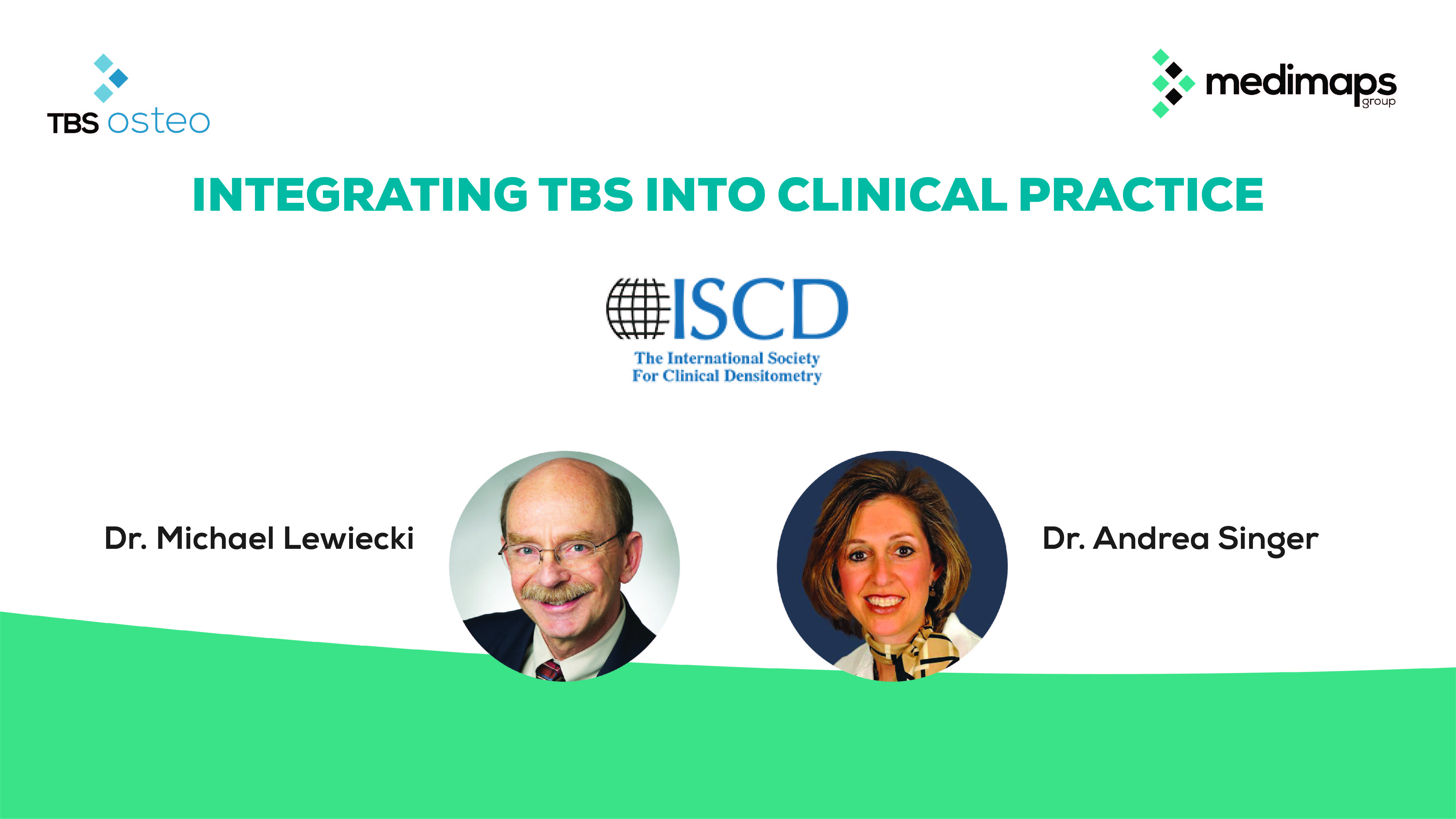Alongside Medimaps Group, Dr. Lewiecki and Dr. Singer, two world-renowned leaders in the field of osteoporosis and bone and mineral disease, shared their insights on the use of Trabecular Bone Score in clinical practice during a panel discussion on March 31, 2022 at the 2022 ISCD Annual Meeting.
Watch the panel discussion and:
- Understand the clinical benefits of TBS
- See how to use TBS in combination with BMD and FRAX in clinical practice
- Find out how TBS can help fine-tune treatment decisions
- Learn about the US reimbursement for TBS
Due to time constraints, we were unfortunately unable to answer all of the questions asked during the Q&A session. Below you will find all the questions left unanswered and their corresponding answers:
Can TBS be used when spine is flawed?
TBS uses the DXA image to calculate a TBS score. In general, when spine is flawed, we advise to follow ISCD guidelines for vertebrae exclusion in the same way as for the BMD. The exception is in patients having osteophytes – a common artifact in late postmenopausal patients and those presenting with osteoarthritis – that disturbs BMD measurements leading to misdiagnosis. Unlike BMD, TBS results has been demonstrated to be minimally affected by the presence of osteophytes. Therefore, TBS can be measured in these cases, and would provide a more accurate fracture risk assessment than BMD.
What denotes low, high and very high FRAX risk?
FRAX intervention thresholds (ITs) are country specific, please check your local guidelines to identify the ITsn for your country.
If a patient had a DXA scan at another facility, can I perform only TBS at my facility and bill for that?
Due to license compatibility, TBS analysis needs to be done on the same DXA machine where the scan acquisition has been performed.
Should TBS be reported (and now billed) for all patients getting a BMD? Or just those with osteopenia?
TBS is providing the micro-architecture information that has been missed from the DXA scan. It has been demonstrated that TBS predicts fractures independently of BMD and clinical risk factors. A patient with a normal BMD may still have an altered micro-architecture which will require the attention of a doctor and a close follow-up. We suggest performing TBS for all patients in order to have a complete overview of the patients’ bone health, and ultimately to prevent fractures.
Does TBS degradation in the setting of normal bone density raise concerns about secondary causes of osteoporosis?
TBS provides great value for patients with secondary osteoporosis leading to increased fracture risk that cannot be fully explained by BMD, since TBS is lower in these patients. Several doctors have raised the same point after evaluation of their patients. Therefore, we suggest checking for secondary osteoporosis causes, although these differences may be also due to other reasons.

